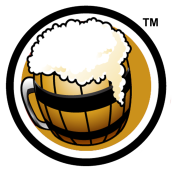Hops
|
Amount
|
Variety
|
Cost
|
Type
|
AA
|
Use
|
Time
|
IBU
|
Bill %
|
|
1.25 oz |
Hallertau Hersbrucker1.25 oz Hallertau Hersbrucker Hops |
|
Pellet |
4 |
Boil
|
60 min |
19.31 |
100% |
|
1.25 oz
/ $ 0.00
|
Hops Summary
|
Amount
|
Variety
|
Cost
|
IBU
|
Bill %
|
|
1.25 oz |
Hallertau Hersbrucker (Pellet) 1.2499999971407 oz Hallertau Hersbrucker (Pellet) Hops |
|
19.31 |
100% |
|
1.25 oz
/ $ 0.00
|
Mash Guidelines
|
Amount
|
Description
|
Type
|
Start Temp
|
Target Temp
|
Time
|
|
3.5 qt |
Strike Water (Flaked Rice) |
Temperature |
-- |
118 °F |
-- |
|
|
Beta-glucanase Rest (Flaked Rice) |
Infusion |
-- |
113 °F |
20 min |
|
|
Protein Rest (Flaked Rice) |
Temperature |
-- |
131 °F |
15 min |
|
18 qt |
Strike Water (All Grain) |
Temperature |
-- |
158 °F |
-- |
|
|
Amylase Rest (All Grain) |
Infusion |
-- |
154 °F |
60 min |
|
15.3 qt |
Mash-Out |
Temperature |
-- |
170 °F |
15 min |
|
20.3 qt |
Batch Sparge |
Sparge |
-- |
170 °F |
15 min |
Starting Mash Thickness:
1.75 qt/lb
|
Other Ingredients
|
Amount
|
Name
|
Cost
|
Type
|
Use
|
Time
|
|
1 tsp |
Irish Moss
|
|
Fining |
Boil |
15 min. |
|
53.75 ml |
Phosphoric acid
|
|
Water Agt |
Mash |
1 hr. |
|
8.19 g |
Phosphoric acid
|
|
Water Agt |
Sparge |
1 hr. |
Target Water Profile
Pilsen (Light Lager)
| Ca+2 |
Mg+2 |
Na+ |
Cl- |
SO4-2 |
HCO3- |
|
7 |
3 |
2 |
5 |
5 |
25 |
Add 1lb rice hulls to every 5lb of grain to help keep mash temperature evenly distributed.
Flaked Rice:
Cook by simmering them with twice their volume in water.
Beta-glucanase rest @ 97-113 F (20 min)
Followed by Protein Rest @ 122F (10 min)
Bring up to 152F and add to mash. |
|
Mash Chemistry and Brewing Water Calculator
|
Notes
Overall Impression:
A highly-attenuated pale lager without strong flavors, typically well-balanced and highly carbonated. Served cold, it is refreshing and thirst-quenching.
Aroma:
Low to medium-low malt aroma, which can be grainy-malty or slightly corny-sweet. Hop aroma may range from very low to a medium, spicy or floral hop presence. While a clean fermentation profile is generally most desirable, low levels of yeast character (such as a light apple fruitiness) are not a fault. A light amount of DMS or corn aroma is not a fault.
Appearance:
Pale straw to gold color. White, frothy head may not be long lasting. Very clear.
Flavor:
Low to moderate levels of grainy-malt flavor, with a crisp, dry, well-attenuated finish. The grain character can be somewhat neutral, or show a light bready-crackery quality or up to moderate corny or malty sweetness. Hop flavor ranges from none to medium levels, and often showing a floral, spicy, or herbal character if detected. Hop bitterness at medium-low to medium level. Balance may vary from slightly malty to slightly bitter, but is relatively close to even. Neutral aftertaste with light malt and sometimes hop flavors. A light amount of DMS is not a fault.
Mouthfeel:
Light to medium body. Moderately high to highly carbonated. Can have a slight carbonic bite on the tongue.
Comments:
International lagers tend to have fewer adjuncts than standard American lagers. They may be all-malt, although strong flavors are still a fault. A broad category of international mass-market lagers ranging from up-scale American lagers to the typical “import” or “green bottle” international beers found in America and many export markets. Often confusingly labeled as a “Pilsner.” Any skunkiness in commercial beers from being light struck in a green bottle is a mishandling fault, not a characteristic of the style.
History:
In the United States, developed as a premium version of the standard American lager, with a similar history. Outside the United States, developed either as an imitation of American style lagers, or as a more accessible (and often drier and less bitter) version of a Pilsner-type beer. Often heavily marketed and exported by large industrial or multi-national breweries.
Characteristic Ingredients:
Two- or six-row barley. May use rice, corn, or sugar as adjuncts, or may be all malt.
Style Comparison:
Generally, more bitter and filling than American lager. Less hoppy and bitter than a German Pils. Less body, malt flavor, and hop character than a Czech Premium Pale Lager. More robust versions can approach a Munich Helles in flavor, although with more of an adjunct quality.
Vital Statistics:
OG: 1.042 – 1.050
FG: 1.008 – 1.012
ABV: 4.6 – 6.0%
IBUs: 18 – 25
SRM: 2 – 6
Commercial Examples:
Asahi Super Dry, Birra Moretti, Corona Extra, Devils Backbone Gold Leaf Lager, Full Sail Session Premium Lager, Heineken, Red Stripe, Singha
Tags:
standard-strength, pale-color, bottom-fermented, lagered, traditional-style, pale-lager-family, balanced

Last Updated and Sharing

- Public: Yup, Shared
- Last Updated: 2019-10-28 21:31 UTC
For quick copying and pasting to a text based forum or email.
Click the Download as HTML file button below.
Recipe costs can be adjusted by changing the batch size. They won't be saved but will give you an idea of costs if your final yield was different.
|
Cost $ |
Cost % |
| Fermentables |
$ |
|
Steeping Grains
(Extract Only) |
$ |
|
| Hops |
$ |
|
| Yeast |
$ |
|
| Other |
$ |
|
| Cost Per Barrel |
$ 0.00 |
|
| Cost Per Pint |
$ 0.00 |
|
| Total Cost |
$ 0.00 |
|
Discussion about this recipe:
